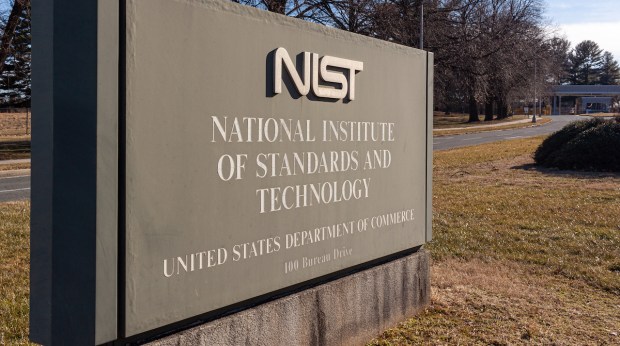
Despite its increasing popularity, generative artificial intelligence is still in its infancy.
What happens now with the novel technology will be determined by what businesses and governments themselves do next.
The U.S. Department of Commerce’s National Institute of Standards and Technology (NIST) took a key first step toward establishing standards around AI’s safe deployment Tuesday (Dec. 19), including measures around testing and safeguarding even the newest systems.
NIST issued a request for information meant to assist the agency in the implementation of its responsibilities under the President Joe Biden administration’s Executive Order on Safe, Secure, and Trustworthy Development and Use of AI.
“President Biden has been clear — AI is the defining technology of our generation, and we have an obligation to harness the power of AI for good while protecting people from its risks,” U.S. Secretary of Commerce Gina Raimondo in a statement. “…[The Department of Commerce is developing] industry standards around AI safety, security and trust that will enable America to continue leading the world in the responsible development and use of this rapidly evolving technology.”
NIST has been charged with developing domestic guidelines for the evaluation of AI models, red-teaming and more; facilitating the development of consensus-based standards; and providing testing environments for the evaluation of AI systems.
The goal is to establish an infrastructure for supporting the responsible development of AI while ensuring progress and innovation aren’t throttled.
Industry groups, AI companies, the general public and other interested parties will have until Feb. 2, 2024, to provide their feedback to the agency.
See also: How AI Firms Plan to Build, Then Control, Superhuman Intelligence
When the internet first became commercially available, it changed everything — reshaping how nearly the entire world works, communicates, learns and socializes.
The downsides of internet-native platforms, like social media, only became apparent when the internet reached critical scale and adoption. Generative AI, observers predict, will be similar. Models were trained on the internet and have many of the internet’s same issues embedded into their foundations.
From encoded bias to copyright infringement, misinformation, fabrications, potentially security-critical information leakages and more, generative AI operates in an opaquely overseen ecosystem.
NIST will be responsible for AI red-teaming, generative AI risk management, reducing the risk of synthetic content, and advancing responsible global technical standards for AI development.
But what does that all mean, and how will the agency fulfill its mission?
Red-teaming, for one, refers to a cybersecurity strategy used to identify new risks. It has a history as a cyber defense tactic, and the term was born from U.S. Cold War simulations where the enemy was termed the “red team.”
The way red-teaming works is by repeatedly attempting to jailbreak a system and prompt it to produce undesired outcomes, identifying ways that computer systems can be taken advantage of or manipulated into working outside of pre-established parameters, and then finding fixes for those vulnerabilities.
Call it ethical hacking, and AI firms like OpenAI, Google, Microsoft and others have each already launched AI red-teaming initiatives as both a way to placate the government and improve their own AI systems.
Red-teaming is essential for building robust and secure AI systems, particularly as AI technologies become more integrated into critical infrastructure.
Read also: AI Systems That Master Math Will Change the World
Risk management in generative AI involves identifying and mitigating potential risks associated with the misuse of AI-generated content, including deepfakes and other forms of synthetic media.
This can include the use of authentication methods, content verification tools, and educating users to be more discerning consumers of digital content.
“[AI] is the most likely general-purpose technology to lead to massive productivity growth,” Avi Goldfarb, Rotman chair in AI and healthcare and a professor of marketing at the Rotman School of Management, University of Toronto, told PYMNTS in an interview posted Dec. 11. “…The important thing to remember in all discussions around AI is that when we slow it down, we slow down the benefits of it, too.”
Around 40% of executives said there is an urgent necessity to adopt generative AI, and 84% of business leaders said they believe generative AI’s impact on the workforce will be positive.
By actively working to reduce AI risks, developers and organizations can contribute to maintaining trust in digital content and protecting individuals from potential harm as the technology plays a more active role in modern life.
Red-teaming and model analysis frameworks will help mitigate risks, such as those that the Financial Stability Oversight Council (FSOC) and Consumer Financial Protection Bureau (CFPB) have identified around AI’s role in the financial system.
“AI is a tool,” Jeremiah Lotz, managing vice president of digital and data at PSCU, told PYMNTS in an interview posted in June. “But it’s one that everyone should take time to learn and play with in order to explore how they can best take advantage of its capabilities.”
For all PYMNTS AI coverage, subscribe to the daily AI Newsletter.